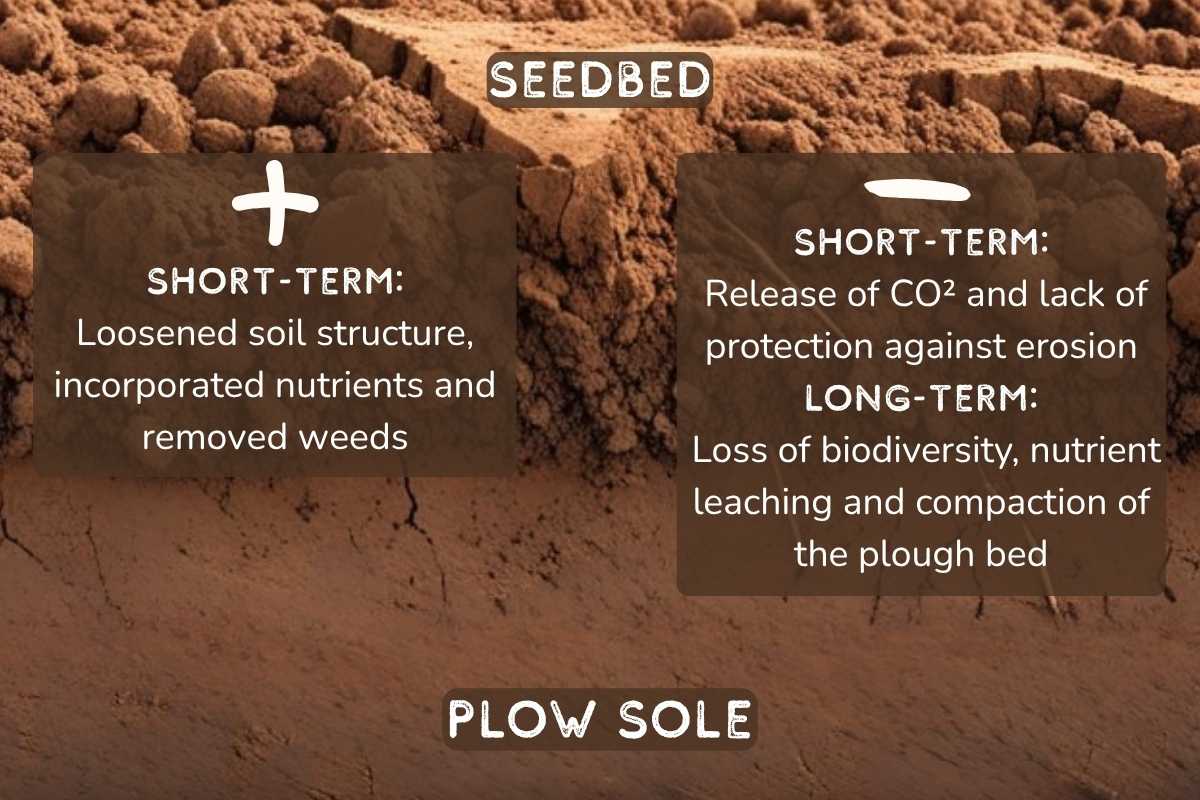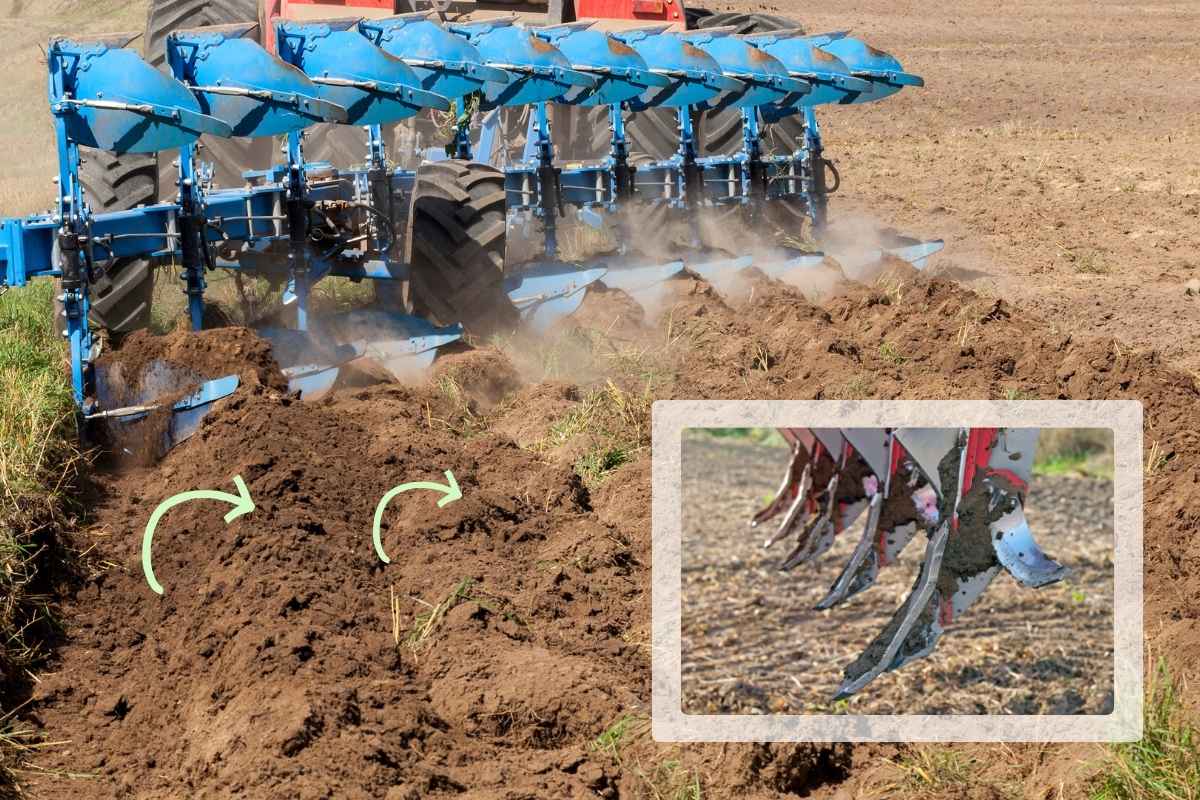Benefits and Drawbacks of This Method
Ploughing a field – that is, the turning, deep soil cultivation also known as tillage – has diverse effects on the soil:
Positive Effects:
The soil structure is initially loosened and crumbled, improving aeration and water infiltration.
Crop residues, weeds, and organic material are incorporated, making nutrients more available and helping to reduce pests and weeds.
Germination conditions for crops are optimized, as a fine seedbed is created.
Negative Consequences:
Soil fauna, especially earthworms and other soil organisms, are severely disturbed or diminished, reducing biological activity in the soil.
Intensive mixing and aeration promote the rapid breakdown of humus and organic matter, leading to a long-term decline in soil fertility and increased CO₂ emissions.
The bare surface after ploughing is unprotected against wind and water erosion until the next crop grows. The risk of soil erosion and crusting increases significantly, especially on sloped land.
Repeated ploughing at the same depth leads to the formation of a so-called “plough pan” – a compacted layer below the loosened zone. This impedes the penetration of water, nutrients, and roots into deeper soil layers and reduces the soil’s water storage capacity.
Soil biodiversity decreases, the ecological balance is disrupted, and the susceptibility to nutrient leaching increases.
About 3 tons of CO₂ are released per hectare when ploughing.

Some Facts:
The annual soil loss due to erosion on agricultural fields in Germany averages between 1.4 and 3.2 tons per hectare. This value is significantly higher than the natural soil formation rate, which is about 0.3 to 1.4 tons per hectare per year. Worldwide, about 36 billion tons of soil are lost annually due to erosion, mainly caused by rainfall. Erosion particularly affects regions with intensive agricultural use, such as South America, Southeast Asia, and equatorial Africa.
Globally, more than one third of agricultural land is affected by degradation, and worldwide, 25% of soils are considered severely limited in their functions due to long-term negative impacts.
Conclusion:
Ploughing facilitates short-term soil cultivation and creates favorable conditions for sowing, but often has long-term negative effects on soil life, humus content, erosion risk, and soil structure. Modern approaches therefore increasingly rely on reduced or conservation tillage to maintain soil health.
Author: Francesco del Orbe


